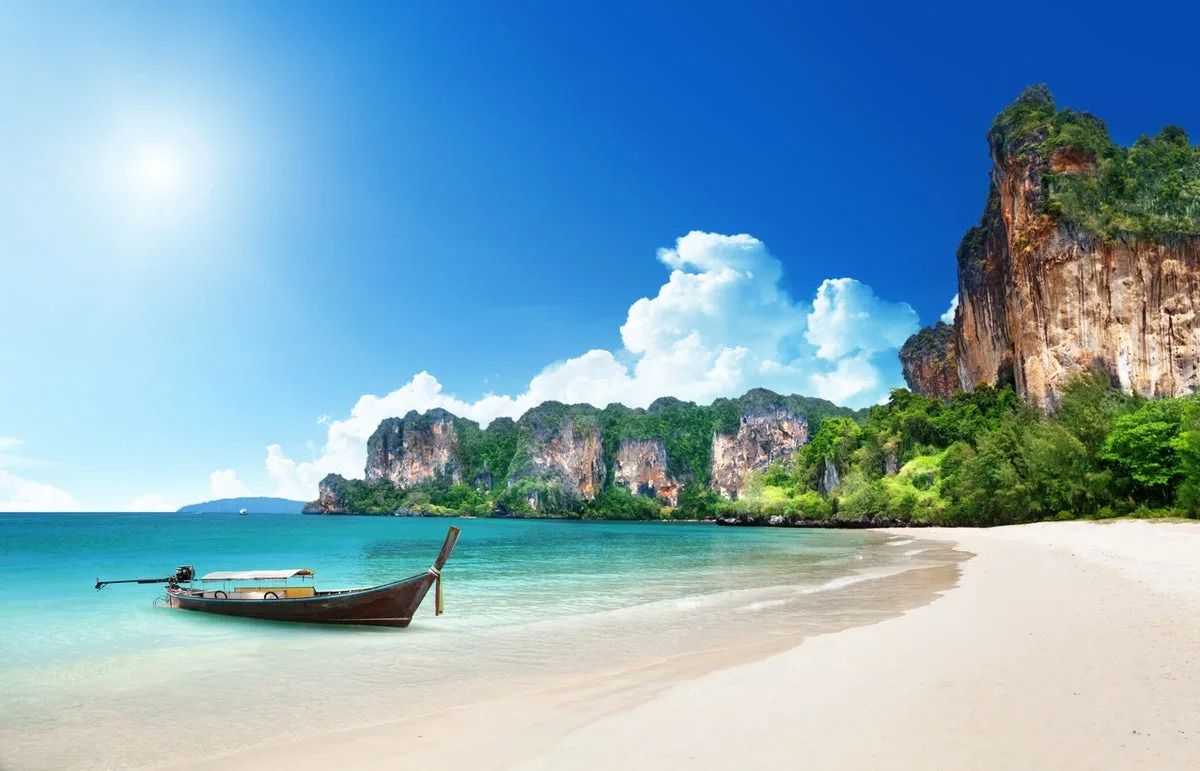We sit quietly in the inflatable dinghy listening to a chorus of soft clicks. Floating on the rippled mirror of the sea are pieces of ice, some gleaming transparent blue with smooth, scythe-like curves, others white and chunky, bobbing past the Zodiac. The snapping sounds are from these thousands of tiny icebergs, air bubbles popping as they melt.
The ice has come from one of the four spectacular glaciers – Monacobreen, Seligerbreen, Emmabreen and Idabreen – that debouche into the 30km-long Liefdefjorden (“Love Fjord”) in Spitsbergen, an island in the Norwegian archipelago of Svalbard, high up in the Arctic Circle. Between the glaciers, with their whipped-up, blue-white ice, are the jagged peaks of black mountains. As the clouds part, sunshine illuminates summits farther back, giving a tantalising glimpse of hidden icy realms, before mist swirls in again, shrouding the view.

Sights like this have been attracting a growing number of visitors to Svalbard in the past two decades, and the tourism industry here hopes the scenery will keep them coming. However, when new Norwegian government regulations come into effect on January 1, 2025, tourists wanting to experience the other, better known, reason most come to Svalbard – getting up (relatively) close to polar bears – will have to adjust their expectations. The closest anyone will be able to get will be 300 metres from July 1 to February 28, and 500 metres between March 1 and June 30 (mating season), relegating polar bears to dots in the distance.
The regulations also outlaw landings in Svalbard’s 29 protected areas, which cover about 65 per cent of the total land area of the archipelago, except at 43 designated landing sites. Passenger limits of 200 will apply in all protected areas, meaning large cruise ships will not have access. Ship speeds have been reduced and breaking fast ice (that “fastened” to a shoreline or other fixed object) will be forbidden.
Environmentalists, however, believe they are necessary to protect the fragile Arctic ecosystem, including from engine noise, emissions and waste-water pollution, even from those vessels promoted as being environmentally friendly. They say the behaviour of polar bears and other animals is being altered by human presence. The new green regulations will probably reposition Svalbard; no longer a place in which to tick seeing polar bears off a bucket list, now somewhere in which to be immersed in majestic natural scenery; admire the archipelago’s other furred, feathered and finned inhabitants; and learn about the history and present of this remote and fascinating place.
It will not disappoint. Even before arriving it became clear that Svalbard is worlds away from my usual life, and not only in distance: I could not help but laugh when checking the weather before my mid-June trip. My phone’s weather app advised: “Next sunset: August”.
The sun had last set at the end of April. Landing in Longyearbyen (population: 2,400), Svalbard’s only town and the world’s northernmost, only intensifies this feeling of being in unfamiliar territory: the town is a widely spaced grid of largely empty streets lined with functional, two-storey rust-red and mustard-yellow rectangular buildings among dry rock and gravel. As across all of Svalbard, there are no trees.
Most visitors use Longyearbyen as a base for snowmobile trips in winter and boat cruises in summer. As a buffer in case of bad weather, I spend a night in town before and after a 10-day tour with Secret Atlas, specialists in small-ship expeditions to the polar regions. As we leave behind all traces of civilisation, the excitement on board mounts, and we introduce ourselves while admiring sweeping snow-covered mountains glittering in the late-afternoon sunshine.
We get a far more raucous encounter with two other Svalbard bird species in the afternoon, on our first shore landing, on a pebbled beach below a cliff known as Gnålberget, meaning “nagging (or whining) mountain” in Norwegian. Here, thousands of black-legged kittiwakes and Brünnich’s guillemots make their homes, sending up a clamorous screech through nesting season. A small wooden hut below the cliff is where Wanny Woldstad, Svalbard’s first woman trapper, stayed when she spent winters in Hornsund in the 1930s.
This plucky woman had been the first female taxi driver in the Norwegian city of Tromsø before the lure of adventure and riches from trapping fox and hunting bear lured her into the wilderness of Svalbard. The hut is cramped, with a wood-burning stove, rusting tools and a room at the back largely taken up by narrow sleeping bunks built into the wall. A sack of chopped wood lies in the front room – the old trappers’ huts dotted across the archipelago are permanently stocked in case of emergencies, and some are still used by hunters.
Only reindeer, Arctic fox, some seal species, Svalbard ptarmigans and a few other birds may be hunted, with numbers carefully monitored. The hunting of polar bears has been forbidden since 1973. A descendant of a lucky escape from Woldstad’s rifle searches among the tufts of golden grass and purple saxifrage flowers at the base of the cliff, looking for any eggs that have fallen.
Snowy white in winter, now the Arctic fox is wearing her dark-brown summer coat to blend in with a land across which the snow is melting. Remaining strands of soft white fur catch the sunlight as she looks at us, curious, before turning tail to continue her forage. We make another shore landing at Tjuvfjorden, where a colony of 300 or so walruses flop about on the rust-red soil, kicking up dust.
Reglioni and Shirokiy take turns to stand guard on a hillock, rifle slung across a shoulder, scouting for polar bears. Walrus are a key source of calories for bears, which can feast on a carcass for days. However, some guests refuse to eat one of the American’s amuse-bouches: a cracker topped with deep red chunks of whale tartare.
It is legal to hunt an annually fluctuating quota (in 2024, it is 1,157) of Minke whales in Norway, but some still view the practice as unethical and environmentally unfriendly. It is on our third day that we see polar bears. We track them with binoculars from the ship’s bridge, small shapes moving over the chocolate-brown scree of a mountainside, but they head farther inland.
We retreat down to the first deck for dinner, while Reglioni and our captain, Swede Bengt Wiman, keep their sights trained on the bears. Just after dessert, Reglioni bounds down the narrow companionway with instructions: “Suit up, we’re going out in the Zodiacs.” The bears have come down to the water’s edge.
While the crew use the crane to lift the Zodiacs into the water, we – now practised in layering up with our thermals, gloves, woolly hat and climbing into our insulated coveralls, tall waterproof boots and life vest – are ready in 10 minutes. We watch the polar bear from the water as she walks along a ridge of jumbled boulders at the shoreline, her white-tinged-with-yellow fur a stark contrast to the black volcanic rock. She knows we are here, watching her, but she seems unfazed, checking among the rocks for something to eat: washed-up carcasses, birds, eggs, fish, even vegetation and kelp.
Every now and then she stops and looks behind her, nose up in the air. A male, noticeably more bulky, has been following her 100 or so metres behind. Between April and late June it is mating season, and male bears track females on the sea ice by following scented trails left by their footpads.
He seems in no hurry, matching her pace, even taking a short dip in the dark waters before clambering back up a sandy bank to continue his steady pursuit. Although the bears seem to be ambling, when we look back to where we first saw them, on the other side of the bay, we can see the distance they have covered just in a matter of minutes. The strides of these beasts – males can weigh 700kg and measure more than two-and-a-half metres from nose to tail – are formidable.
After their search of the shoreline comes up empty, the bears head back onto the ice, probably in search of their favoured food: ringed seals. The female has ducked out of sight behind the rocky outcrop, but we can see the male heading inland on the flat white plain, retreating until he is just a speck fading into the mist. By the time we are clambering back up the Jacob’s ladder against the bright-red hull of the Vikingfjord, it is almost midnight.
As the weather remains relatively stable we settle into a rhythm of morning and afternoon Zodiac rides, seeing the white humps of beluga whales in the water with us and seals on the ice. We see another six polar bears from the deck of the Vikingfjord, farther away than our first, but captivating nonetheless. After a Zodiac ride in temperatures close to zero, I warm up in the on-board sauna.
When it gets too hot in the deliciously wood-scented space, I step out on the deck for a cold blast of Arctic air, before closing myself back inside. As I gaze out of the sauna window, I spot a lone walrus swimming through our wake, its two white tusks clearly visible against the deep blue of the sea. The ever-energetic and informed Reglioni keeps us entertained on board with lectures on polar photography and glacial ice, and the knowledgeable Shirokiy, with his darkly poetic Slavic sense of humour, describes Svalbard’s past as just “snow, fog and misery” in a talk on the history of the archipelago.
One morning, we follow much of the 180km-long, 24-metre-tall cliff of ice formed by the Bråsvellbreen glacier and Austfonna ice cap on the northeasterly island of Nordaustlandet, which evokes the wall of ice in television series Game of Thrones . Along its length in summer, waterfalls punctuate the cliff face, sheets of white tumbling down against the cyan of the ice into the azure of the water. Svalbard may be a realm of fog and snow, but for today’s visitors, there is no misery.
The focus of tourism may be changing, but the extraordinary, otherworldly beauty of the landscape and its inhabitants remains unique and unforgettable..



















